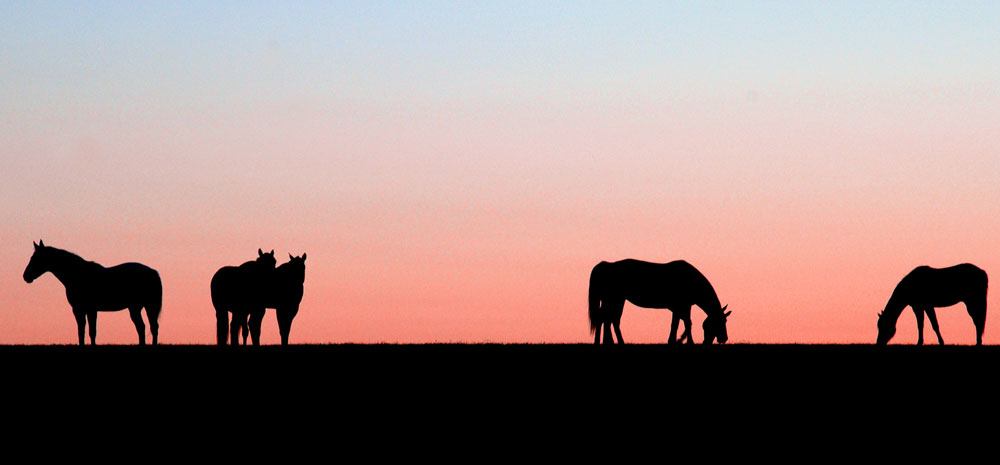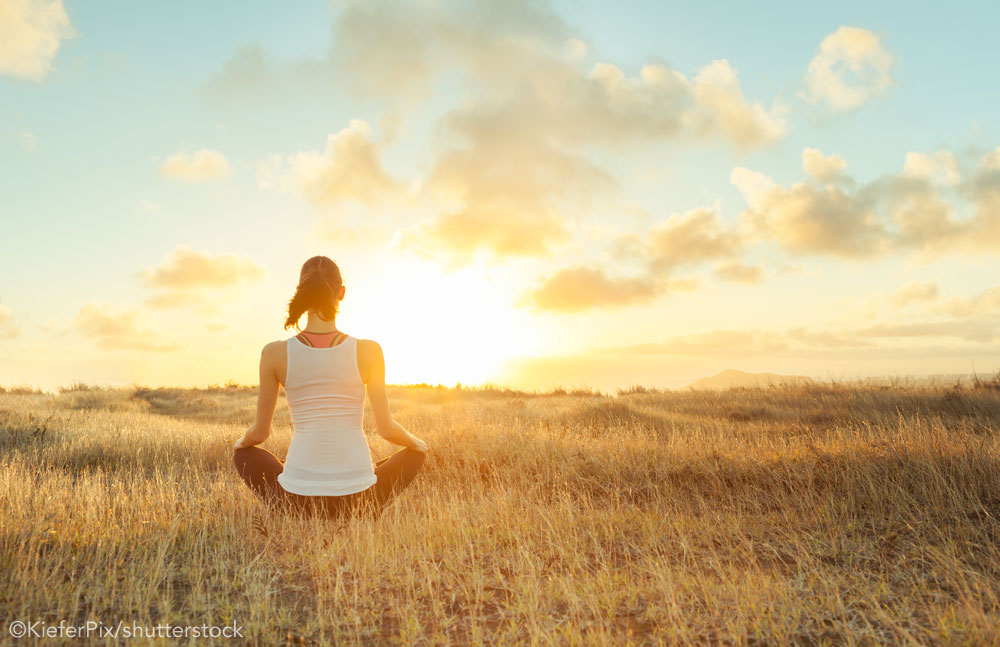You know those days when everything goes wrong? You miss the lead change during a big competition. Your horse spooks and you fall off. He refuses to cross the creek, or won’t load on the trailer. Maybe you arrive at the barn and discover a huge gash on his shoulder.And then the internal chatter begins about how you let yourself down, how you disappointed others, how upset you are, how right you are or how worried you are.Before long, any normal human being is stuck in the pit of rehashing the past with no way of climbing out. But this doesn’t have to be your default response. Here’s how meditation can benefit equestrians.

A Way Out
What if we can learn a practice that takes 10 minutes a day and can help us compete at a higher level, stay on during a big spook or calm our horse and ourselves during an emergency? And what if this practice can also help us deal with challenges in our daily life? Not only that, but we can practice it anywhere, because we don’t need any special tools. If this sounds intriguing, the solution may be as simple as sitting down. Here are some tips on how to get started in meditation for equestrians.
The Quiet Tool
Meditation—the practice of sitting and bringing focus to the breath (or a word or phrase)—has been taught for thousands of years. Today people in all walks of life practice meditation of some form.
Science has proven that meditation reduces stress and cortisol (the stress hormone) production, increases focus and calmness, and can reduce pain—and not just during the meditation session. Over time, the benefits seep into daily life.
Meditation for Equestrians
When we’re beating ourselves up about a botched dressage or reining test, thinking about the grocery list, or rehashing an argument, we aren’t present with what is happening Now.
But Now is the only place our horses live. And Now is the only place that we can affect in a positive way. What’s done is over. But we can choose to change the quality of the next moment. Eventually, when we ride in the Now, we can be with our horse every step. When that happens, our riding can elevate to the art and beautiful partnership we see in top riders.
No matter our current level of horsemanship, our horses reflect our mental and physical state. By allowing us to focus on what’s happening now, meditation can decrease our anxiety instead of feeding it. This allows us to offer our horse a place of calm.
We choose to breathe deeply, relax and let go of tension. This allows our center to drop, helping us stay supple and sit more deeply in the saddle. This helps us absorb and diffuse the energy of a spook or a stumble. Our horse responds to our centered energy, and we return together to a calm place.
So how do we get there?

Getting Started with Meditation for Equestrians
Nothing special or fancy is needed to start developing your meditation practice. Here are three basic steps to get started.
- Designate your place. Set aside a certain place for your meditation practice, whether it’s a corner of a room or an entire room.
- Pick your seat. If you can sit on the floor, find a firm pillow or cushion. If you need to sit on a chair for physical reasons, pick a chair that allows your hip angle to be about 45 degrees with your feet flat on the floor.
- Create a pleasing environment. You can add a low table and place on it things you find peaceful: a candle, flowers, a memento, incense or a favorite photo.
Once your space is set up, it’s time to sit. Different traditions and lineages approach meditation in their own ways. These suggestions are based generally on the Shambhala tradition.
- Posture. As with riding, sit upright with your head aligned over your shoulders. Elongate the back of your neck as if a string is gently pulling the top of your head. If you’re sitting in a chair, sit on your seat bones instead of resting your back on the chair.
- Hands. Place your hands palms down over your knees and rest
them lightly. - Eyes. Let your eyes relax and gaze softly down at a spot about 5 feet ahead of you on the floor.
- Time. Set a timer for 10 minutes.
- Breathe. Start with three long inhales and exhales. Then bring your focus to your breath. Feel your breath in your body, starting at the top of your head and flowing to your toes.
- Sit and breathe. Notice your breath. Simply allow it to be as it is, rather than trying to control or direct it.
- Focus. When your thoughts drift away (and they will), recognize the thought, then gently let the thought go. Bring your focus again to your breathing. It can be helpful to label the thought as “thinking,” and visualize setting aside the thought in a basket.
- Return your focus. It doesn’t matter that your mind strays. Just come back to the breath. Gently. Again and again.
- Dedicate your practice. When your timer chimes, silently request that your humble practice benefit you and all beings you come into contact with today.
- Stand up quietly and re-enter your day.
Your 30-Day Meditation for Equestrians Challenge
For the next 30 days, set aside 10 minutes for your meditation practice every day. It’s helpful to practice at the same time so it becomes part of your routine, whether it’s first thing in the morning, during lunch, or at the end of day.
As you make your way through your first day and the next 30 days, bring your focus back to your breath as often as you remember to: while you’re in meetings, driving, standing in line, shopping, cooking, cleaning. And at the barn while grooming, mucking, feeding, leading and riding.
Every time you come back to the breath, you come back to the present moment and all it has to offer.
Next Steps with Meditation for Equestrians
At the end of 30 days, you can choose to stay with your 10-minute daily practice, expand it to 15 minutes, or let it go. It’s up to you.
You may wonder if your 30 days of meditation practice is “working.”
Maybe you’re starting to feel your horse’s feet touch the ground at every stride. Maybe you’re able to ride in new or scary situations with more calmness. Maybe you’re able to let go of a mistake rather than replaying it over and over.
You may begin to notice you’re interacting with life in a little different way. Maybe you’re more patient with yourself, your horse, and other people.
Or maybe not.
Just like with riding, progress may not come in huge, linear leaps forward. But it does come, often imperceptibly, over time. The act of sitting daily and returning to the breath whenever we remember can have profound effects.
Even if you can’t feel it or see it yet, you are changing. As with riding, when you approach this practice with patience, consistency and joy in the learning process, you allow space for the small changes that can shift the way you ride and how you interact with everyday life.





